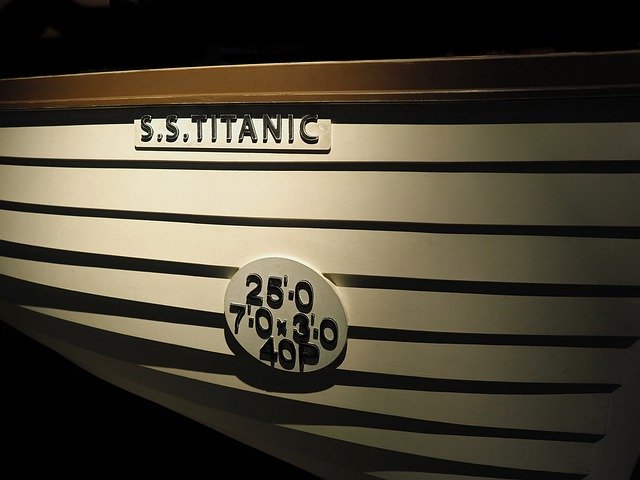History of life-saving appliances requirements

1914 and 1929 SOLAS Conventions
The first life-saving appliances requirements for international shipping were developed as part of the 1914 SOLAS Convention, which was developed in response to the sinking of the Titanic in 1912. Although the 1914 SOLAS Convention was prevented from coming into force due to World War I, it did contain basic fire safety requirements which were later carried over to the 1929 SOLAS Convention.
1960 SOLAS Convention
In the 1960 Convention, many safety measures which had once applied only to passenger ships were extended to cargo ships, notably, in the chapter dealing with life-saving appliances, provision was made for the carriage of liferafts, which had developed to such an extent that they could be regarded as a partial substitute for lifeboats in some cases.
Additionally, arrangements for life-saving appliances on certain tankers and cargo ships were introduced.
1974 SOLAS Convention
The 1974 SOLAS Convention, which was adopted in 1974, is the version currently in force and it is unlikely to be replaced by a new instrument because of the new tacit amendment procedure which is included in article VIII.
In the new Convention, the original chapter III was divided into three parts. Part A contained general requirements, which applied to all ships, described appliances by type, their equipment, construction specifications, methods of determining their capacity and provisions for maintenance and availability. It also described procedures for emergency and routine drills. Parts B and C contained additional requirements for passenger and cargo ships, respectively.
1978 Protocol
Since the 1974 SOLAS Convention had not entered into force, it was impossible to amend the Convention. Instead, an international conference was convened to adopt a Protocol which would enter into force six months after ratification by 15 States with 50 per cent of world tonnage of merchant ships (but not before the parent 1974 SOLAS Convention had entered into force). The Protocol entered into force on 1 May 1981, involving substantial amendments to the 1974 Convention.
Amendments to the 1978 Protocol
In 1983 amendments, the revised chapter III was increased from 38 regulations to 53 and retitled "Life-saving appliances and arrangements". The main changes were to ensure operational readiness of ships and the safe abandonment survival, detection and retrieval of survivors.
Among the more important changes introduced by the revised chapter III are those involving lifeboats, liferafts and life-jackets.
The amendments adopted in 1995 include the addition of a new section requiring ro-ro passenger ships to be fitted with public address systems, a new regulation providing improved requirements for life-saving appliances and arrangements and a requirement for all passenger ships to have full information on the details of passengers on board and requirements for the provision of a helicopter pick-up or landing area.
The June 1996 amendments include the complete replacement of the existing text of chapter III, which deals with life-saving appliances and arrangements. The amendments took into account changes in technology that have occurred since the chapter was last revised in 1983. Many of the technical requirements were transferred to a new International Life-Saving Appliance (LSA) Code.
For the latest amendments to the SOLAS Convention see the meeting summaries of the Maritime Safety Committee.
Major instruments dealing with life-saving appliances
1)International Life-Saving Appliance (LSA) Code
The International Life-Saving Appliance (LSA) Code was adopted by IMO’s Maritime Safety Committee (MSC) at its 66th session (June 1996) by resolution MSC.48(66). It provides international requirements for the life-saving appliances required by chapter III of the 1974 SOLAS Convention, including personal life-saving appliances like lifebuoys, lifejackets, immersion suits, anti-exposure suits and thermal protective aids; visual aids, such as parachute flares, hand flares and buoyant smoke signals; survival craft, such as liferafts and lifeboats; rescue boats; launching and embarkation appliances and marine evacuation systems line throwing appliances; and general alarm and public address systems.
The Code was made mandatory by resolution MSC.47(66) under SOLAS regulation III/3.10, whereby regulation III/34 determines that all life-saving appliances and arrangements shall comply with its requirements. The Code entered into force on 1 July 1998.
Contents of the LSA Code
Chapter I General
Chapter II Personal life-saving appliances
Chapter III Visual signals
Chapter IV Survival craft
Chapter V Rescue boats
Chapter VI Launching and embarkation appliances
Chapter VII Other life-saving appliances
2)Revised recommendation on testing of life-saving appliances (resolution MSC.81(70))
Recommendations on the testing of life-saving appliances were first adopted by the IMO Assembly in 1991, by resolution A.689(17). In 1998, the MSC, recognizing the need to introduce more precise requirements for the testing of life-saving appliances and recalling that it had amended the recommendations on several occasions since their adoption, adopted the Revised recommendation on testing of life-saving appliances (resolution MSC.81(70)), effectively replacing resolution A.689(17).
Part 1 includes prototype tests for life-saving appliances before the production of life-saving appliances by the manufacturer.
Part 2 covers production and installation tests to be inspected by the representatives of the Administration to ensure that the quality of life-saving appliances and the materials used comply with the specification of the approved prototype life-saving appliance as per part 1 of the Revised recommendation. Where the proper operation of life-saving appliances is dependent on their correct installation in ships, the Administration should require installation tests to ensure that the appliances have been correctly fitted in a ship.
3)The Code of practice for the evaluation, testing and acceptance of prototype novel life-saving appliances and arrangements
The Code of practice for the evaluation, testing and acceptance of prototype novel life-saving appliances and arrangements, adopted by the Assembly in 1983 by resolution A.520(13), is intended to cater for prototype novel life-saving appliances and arrangements which may be developed, and do not fully meet the requirements of chapter III of the 1974 SOLAS Convention, but provide the same or higher safety standards.